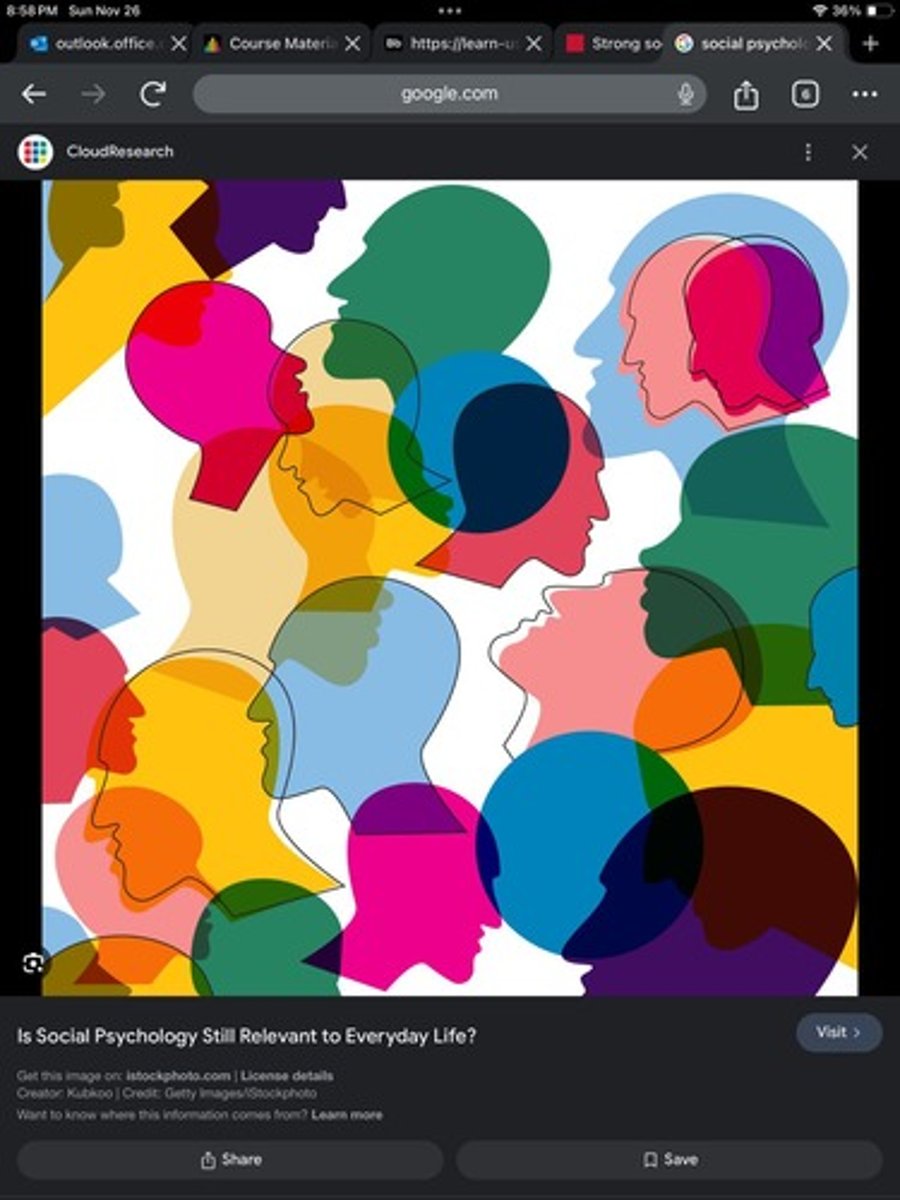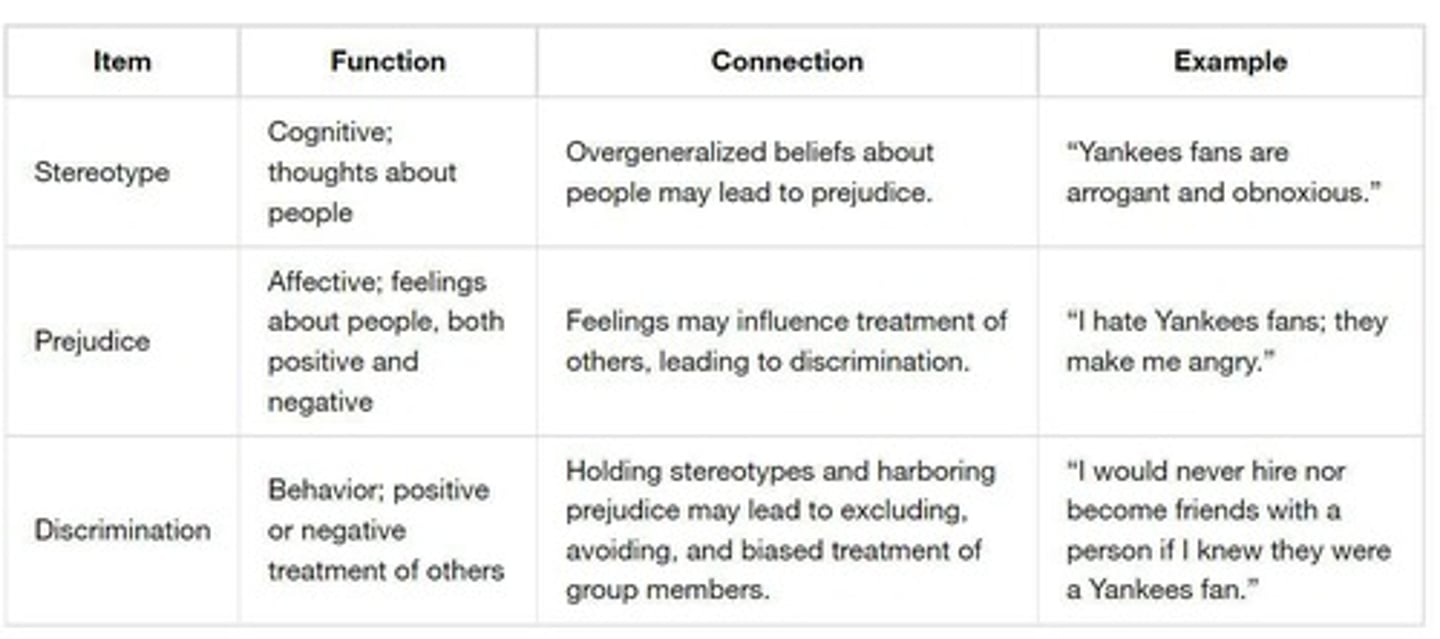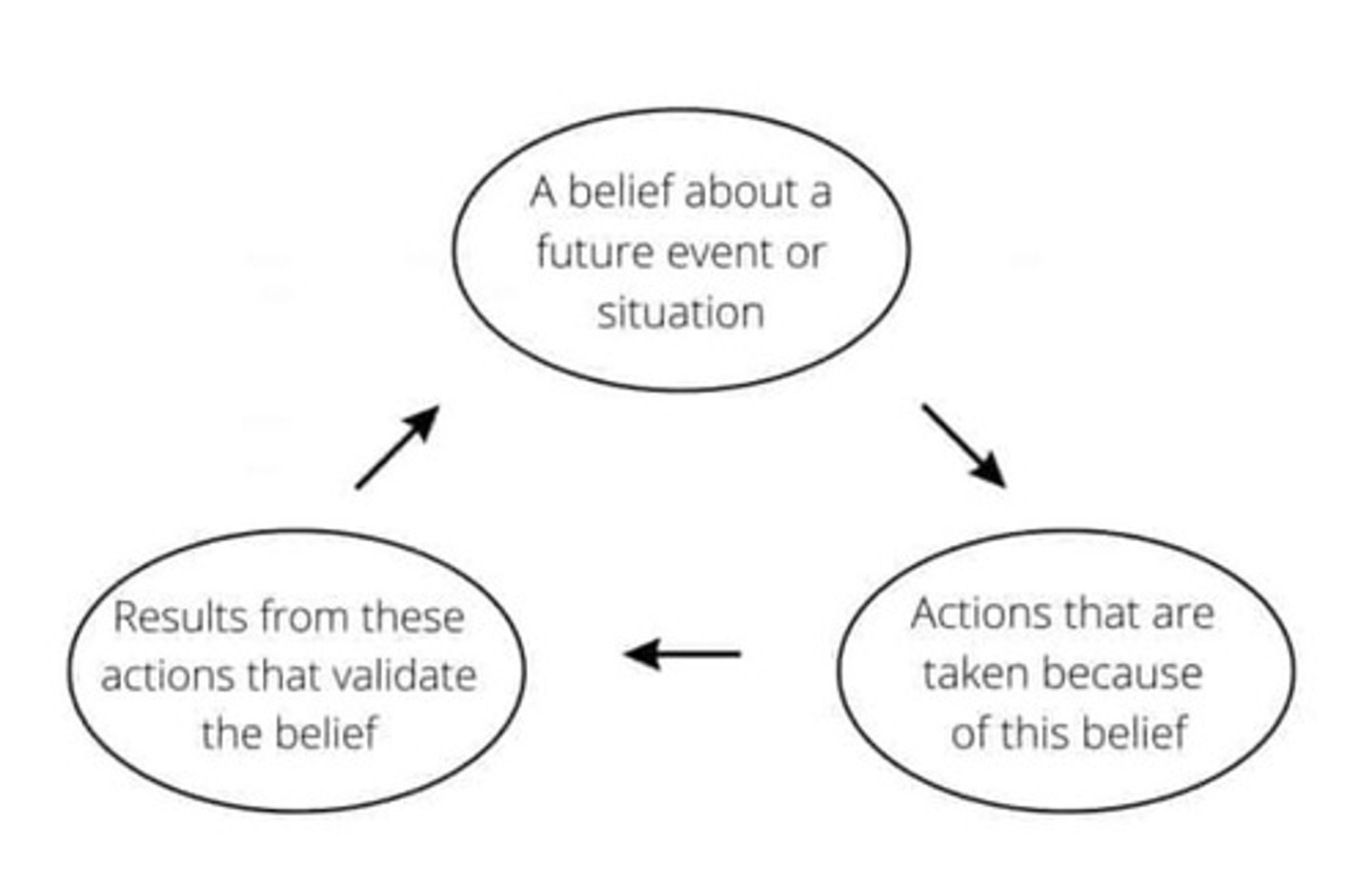Chapter 12: Introduction to Social Psychology Concepts
1/77
There's no tags or description
Looks like no tags are added yet.
Name | Mastery | Learn | Test | Matching | Spaced |
|---|
No study sessions yet.
78 Terms
Social Psychology
An individual's thoughts, feelings, and behaviors are influenced by social situations.
Intrapersonal topics
Emotions and attitudes, the self, and social cognition.
Interpersonal topics
Helping behavior, aggression, prejudice and discrimination, attraction and close relationships, and group processes.
Dispositionism
View that our behavior is determined by internal factors (attribute of a person such as personality traits and temperament).
Situationism
View that our behavior and actions are determined by our immediate environment and surroundings.
Attributions
Evaluation of or feelings toward a person, idea, or object that give us the explanation about other people's behavior.
Locus of control
Refers to the degree to which individuals believe they can control events affecting them (internal versus external).
Stability
Refers to whether an attribution is perceived as stable or unstable.
Controllability
Refers to whether an attribution is perceived as controllable or uncontrollable.
Fundamental Attribution Error
Tendency to overemphasize internal factors as explanations/attributions for the behavior of other people.
Victim-blaming
An attitude or belief suggesting that the victim rather than the perpetrator bears responsibility for the assault.
Just-world hypothesis
The belief that people get the outcomes they deserve.
Actor-Observer Bias
Tendency to attribute other people's behaviors to internal factors and attribute our own behaviors to situational forces.
Self-Serving Bias
Tendency to take credit by making dispositional or internal attributions for positive outcomes but situational or external attributions for negative outcomes.
Social Role
A pattern of behavior that is expected of a person in a given setting or group.
Social Norm
A group's expectation of what is appropriate and acceptable behavior for its members.
Script
The sequence of events expected in a specific setting.
Scripts
Important sources of information to guide behavior in situations.
Zimbardo's Stanford Prison Experiment
Demonstrated the power of social roles, social norms, and scripts.

Stanford Prison Experiment (1971)
Mock prison, participants (male college students), randomly assigned to play the role of prisoners or guards.
Guards' behavior in the experiment
Guards started to harass prisoners in an increasingly sadistic manner.
Prisoners' response in the experiment
Prisoners began to show signs of severe anxiety and hopelessness.
Duration of the Stanford Prison Experiment
The two-week study was ended after six days.
Attitude
Our evaluation of a person, an idea, or an object.
Components of attitude
Three components: Affective component (feelings), Behavioral component (the effect of the attitude on behavior), Cognitive component (beliefs and knowledge).
Change of attitudes
Attitudes can be changed by our own free will or by external sources.
Cognitive Dissonance
Psychological discomfort arising from holding two or more inconsistent attitudes, behaviors, or cognitions.
Example of cognitive dissonance
Believing cigarettes are bad for your health but smoking cigarettes anyway.
Reducing cognitive dissonance
Change behavior, change belief through rationalization or denial, or add a new cognition.
Persuasion
Process of changing our attitudes toward something based on some kind of communication.
Foot-in-the-Door Technique
Persuader gets a person to agree to a large request by having them agree to a modest request first.
Principle of consistency
Past behavior often directs future behavior.
Freedman and Fraser (1966)
Participants who agreed to a small request were more likely to agree to a larger request later.
Conformity
The act of matching attitudes, beliefs, and behaviors to group norms.
Solomon Asch
Conducted a conformity study using line segments to illustrate judgment tasks.
Judgment task in Asch's study
Participants had to determine which line on the right (a, b, or c) is the same length as line x on the left.
Conformity
the change in a person's behavior to go along with the group, even if they do not agree with the group
Asch effect
the influence of the group majority on an individual's judgement
Factors that make a person more likely to conform
The size of the majority, The presence of another dissenter, The public or private nature of the responses
Obedience
the change of an individual's behavior to comply with a demand by an authority figure

Stanley Milgram
Participants were told to shock 'learners' (confederate) for giving a wrong answer to test items; Participants believed they were giving the learners shocks, which increased all the way up to 450 volts; Two out of three (65%) participants continued to administer shocks to an unresponsive learner
Groupthink
the modification of the opinions of members of a group to align with what they believe is the group consensus
Group Polarization
the strengthening of an original group attitude after the discussion of views within a group
Prejudice
a preconceived opinion that is not based on reason or actual experience
Discrimination
the unjust or prejudicial treatment of different categories of people or things
Dual Attitudes Model
Explicit attitudes: conscious and controllable; Implicit attitudes: unconscious and uncontrollable

Racism
prejudice and discrimination against an individual based on race
Ageism
prejudice and discrimination toward individuals based solely on their age
Sexism
prejudice and discrimination toward individuals based on their sex
Homophobia
prejudice and discrimination of individuals based solely on their sexual orientation
Transphobia
prejudice and discrimination of individuals who are perceived to break or blur stereotypical gender roles
Self-Fulfilling Prophecy
an expectation held by a person that alters his or her behavior in a way that tends to make it true

Confirmation Bias
Tendency to seek out information that supports our stereotypes and ignore information that is inconsistent with our stereotypes
In-groups
a group we identify with or see ourselves as belonging to
Out-groups
a group that we view as fundamentally different from us
In-group bias
prejudice and discrimination against out-group
Scapegoating
the act of blaming an out-group when the in-group experiences frustration or is blocked from obtaining a goal
Rosenthal and Jacobson (1968)
Disadvantaged students who had teachers that expected them to perform well had higher grades than disadvantaged students whose teachers expected them to do poorly
Prosocial behavior
voluntary behavior with the intent to help other people
Altruism
people's desire to help others even if the costs outweigh the benefits of helping
Empathy
the capacity to understand another person's perspective, to feel what he/she feels
Homophily
the tendency for people to form social networks with others who are similar
Matching Hypothesis
people tend to form relationships with those they view as their equal in physical attractiveness and social desirability
Reciprocity
the give and take in relationships
Self-disclosure
the sharing of personal information
Sternberg's Triangular Theory of Love
Seven types of love can be described from combinations of three components: Intimacy, Passion, Commitment
Intimacy
sharing of details and intimate thoughts and emotions
Passion
physical attraction
Commitment
standing by the person
Social Exchange Theory
People keep track of the costs and benefits of forming and maintaining a relationship
Proximity
the people with whom you have the most contact
Similarity
people who are similar to us in background, attitudes, and lifestyle (factor influencing attraction)
Helping
self-serving because our egos are involved, and we receive benefits
Emphatic people
make emotional connections with others and feel compelled to help
Reciprocity:
We contribute to relationships but expect to receive benefits in return
Intimate connections
Leads to more intimate connections through self-disclosure
Benefits of relationships
Typically, only those relationships in which the benefits outweigh the costs will be maintained
Homophily
the tendency for people to form social networks with others who are similar (factor influencing attraction)